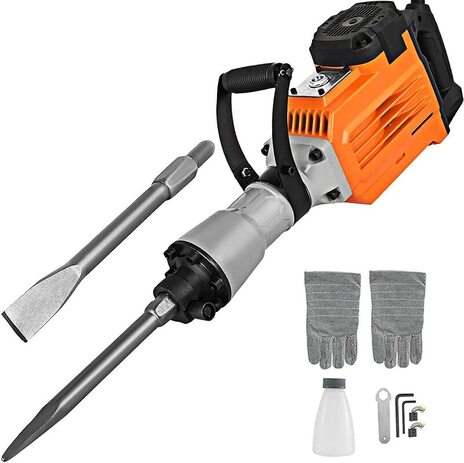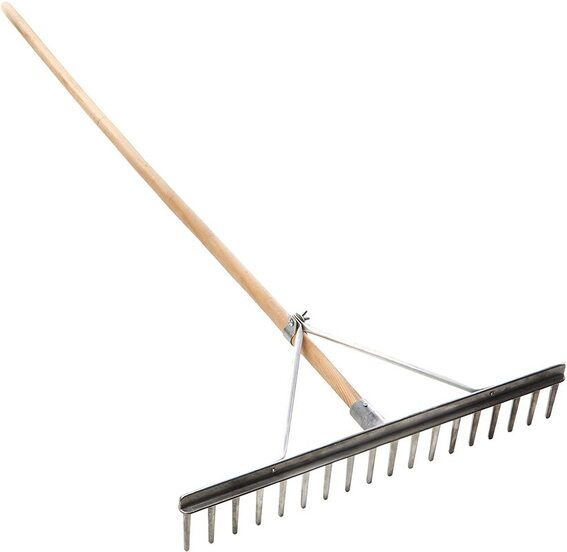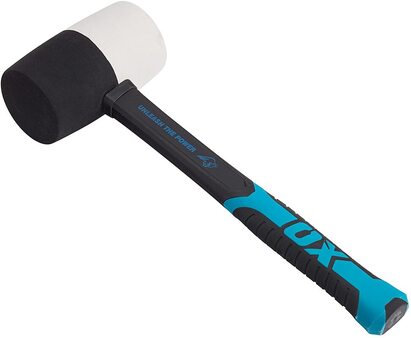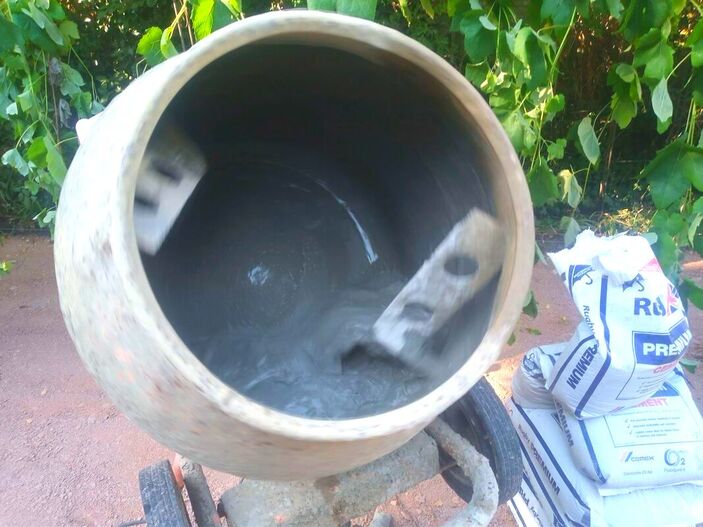|
This article contains affiliate links
There is nothing more exciting than installing a new patio in the garden. Paving can set up for a new garden design theme or provide a functional space connected to the home.
However it is important to remember that patios are expensive to build requiring large amounts labour and skill. Consequently you may choose to have a go at building your own patio yourself. In order to make this possible therefore it is essential that you have the correct tools before you begin. In this article we list the 20 most important tools and equipment for laying a patio. Not only will we simply list the items but explain how they are used during the build process. This will allow you to know what you need and how to impliment them during the project. 1. Spade
Spades are one of the most important tools for building a patio. Not only can they be used to dig out but can also be used to move around mortar. Typically patio layers spade out mortar mix from a wheelbarrow straight on to the sub base. 2. Shovel
Shovels are generally used for scraping up loose soil when digging out. They are also used when loading up the cement mixer and scooping up aggregates for the base. I personally prefer to use a long handled shovel as it is easier on the lower back. 3. Mattock
A mattock is a kind of pickaxe but with shorter and more robust working parts. Mattocks can be invaluable when digging out and breaking away old concrete surfacing. The working blades can be used to chop away roots and fragment compacted ground. 4. Breaker
Breakers can be very effective of breaking through any hard standing when excavating a patio base. Often when digging you come across lumps of concrete and masonry which need to be broken up. Most of the time a hand held electric breaker is sufficient to do the job. 5. Landscaping rake
Rakes are great for levelling sub base aggregates like Mot Type 1 or crushed concrete. The more level and even your sub base levels are the easier it is to lay a level patio on mortar. Landscaping rakes are ideal for this and have much larger heads than gardening rakes. 6. WheelbarrowWhen building patios wheelbarrows are essential for carting around heavy loads. During the dig out you will need to transport spoil from site to a skip or grab loader. Furthermore aggregates, such as sand and sub base will need to be wheeled in as well as paving slabs. Wheel barrows will also be used to cart mortar around the laying area. 7. Scaffold board
Scaffold boards can provide a sturdy roadway for barrows down steps or difficult terrain. Most commonly these boards are used to ramp up wheelbarrows into skips. They can also offer a safe, suspended, passage over freshly laid paving. 8. Laser level
One of the most important aspects of patio construction is setting up your levels. This is very important as it allows you to quantify needed materials and form the correct base build up. Patio levels will also dictate where surface run off will flow in times of heavy rain. Laser levels allow you to plot accurate levels over large distances, perfect for patio construction. 9. Tape measure
Tape measures are an important piece of equipment for building patios with accuracy. Firstly they can be used to check you are excavating your paving area to the correct depth. Tape measures also allow you to make precise cuts around corners and features such as inspection covers. I find it useful to have both a 50m tape for setting out and a 10m tape for accurate cutting. 10. Set square
Large folding set squares are extremely useful tools when setting out and planning patios. These enable you to plot out right angles accurately so you’re paving fits squarely where you need it. They can also set out retaining walls perfectly square so there are no angular cuts within the patio. 11. String line
String lines are an absolutely sure way to build a patio edge to a perfect straight line. Sometimes even the external boundary of a building is not perfectly straight. This can lead to skewed joint lines and visually noticeable angular cuts. String lines are also a great way to check your joints are lining up straight. 12. Spray paint
Spray paint is not an absolute essential commodity when setting out a new patio. However it can be extremely useful in visualising the position or impact of a proposed project. This is especially the case when there are curves or more complicated shapes to be agreed upon. 13. Trowel
Trowels are very useful tools when building a new patio and come in a wide variety of shapes and sizes. The two main types for patio laying are bricklaying trowels and pointing trowels. Bricklaying trowels allow you to apply mortar to the sub base in a controlled fashion. Pointing trowels are great for finishing edges and pointing joints at the end. 14. Rubber malletRubber mallets are an effective way to tap paving down onto mortar mixes. Other solid methods such as the base of club hammers can actually fracture paving. Mallets offer a soft and gentle way to bed down pavers, particularly good for beginners. 15. Spirit level
Spirit levels provide the patio layer the ability to level their paving as they lay. Typically the long level is the most popular level for the job. At two metres long these provide a long, straight edge to flush paving over distance. Spirit levels also allow you to accurately lay to falls. 16. Buckets
Buckets are generally useful to have to hand when laying a patio. Typically these are used to hold water to load mixers but can also be used for mortar and jointing mixes. Buckets can also be effective for storing smaller tools and to cover extension leads in damp conditions. 17. Extension lead
Extension leads are vital when laying new paving as they provide your source of electrical power. If there are no external plug sockets to the property leads can be fed through a slightly open window. For landscaping purposes it is best to use extension leads with a reach of 25 metres. 18. Cement mixerAs building a patio relies upon a gradual supply of mortar as you lay cement mixers are vital. These are portable and powered by either electricity or gasoline. As a large power tool these do come at a larger expense but are readily available at hire stores. 19. Grinder & Diamond bladeGrinders are a sure way to cut paving neatly around obstacles and inspection covers. Typically for patio building both 9inch and 12 inch are preferred. A good quality diamond blade is ideal for cutting a wide range of paving materials. 20. Broom
When building a patio it is always useful to have a stiff brush to hand. This will enable you to keep the surrounding work area clean and free from mess. A common problem when building a patio is cements staining. To avoid this is keep the site swept and brush off paving with water after it’s laid. 21. Pressure washer
Not always thought of as a patio laying essential but very important if you want a clean finish. Normally new patios hold a lot of ground in dust and dirt from cutting and the general build. This is especially so on wet and muddy sites. When the paving is laid and pointed a good pressure wash will force out any stubborn dirt. This will result in the perfect completed product for your friends and family to enjoy.
Thank you for reading our article on the best tools and equipment for laying a patio.
If the article was helpful to you why not share it to help us write more useful articles. If you are undertaking a landscaping project yourself why not check out our resource page? If you require paving services please contact us here.
'As an Amazon affiliate I earn from qualifying purchases.'
0 Comments
Leave a Reply. |
The Author
|
Landscaping services across Buckinghamshire, Amersham, Aylesbury & High Wycombe
Hyde Heath, Amersham, Buckinghamshire |
|


























